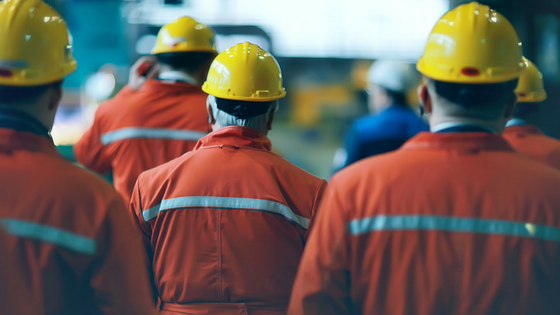Industrial safety isn’t just good for business – it’s critical to keep your workers safe, healthy, and happy.
This guide explores some of the top safety challenges in industrial markets and how you can prepare your team to combat them.
What Is Industrial Safety?
Industrial facilities have unique safety challenges because hazards and incidents affect more than just the people on the factory floor. A fire in the workplace, missed days due to injury, or chemical hazards can affect your production output, which can delay shipping schedules, fulfillment, vendor relationships, and customer satisfaction.
Practicing good industrial safety is the best way to ensure a smooth-running operation that has the best interests of workers, vendors, and customers at heart. Industrial safety works hard to prevent workplace hazards, including chemical exposures, poor ergonomics, and physical hazards so that business can continue as normal with no interruption to production.
Common Obstacles in Industrial Safety Strategies
Achieving industrial safety is made all the more challenging because of all the moving parts to EHS. Take a look at some of the top complication that can potentially create an unsafe work environment:
Complex Safety Laws
Safety laws and regulations are continually evolving to create safer workspaces, but it’s an ongoing challenge to keep abreast of these changes. Not only must you understand and adapt to these changes, you must also communicate them to your employees and ensure they can act on them appropriately.
Ergonomic Hazards
Much of industrial production requires repetitive motions that don’t allow for much variation. Workers perform the same tasks for hours at a time, which can put them at risk for developing work-related injuries. The motions of many manufacturing jobs are largely unchangeable. There may be little you can do to limit twisting, bending, stooping, reaching, or lifting for certain tasks.
To combat this, EHS leaders may encourage workers to take frequent breaks (which can affect productivity) or use protective gear or equipment, such as anti-fatigue mats or back braces.
Ongoing Employee Training
A trained employee is an informed employee, but keeping up with training requirements for an entire staff can be a full-time job in itself. EHS leaders must recognize that training is an important investment, and should be prioritized as much for “seasoned” employees as it is for newcomers.
Training is often riddled with issues. For starters, many employees may be unable to connect the importance of the training with their job and may not take it seriously. Some see training as a necessary part of the job rather than a value-added task. If you have long-time employees, they may be more inclined to go through the motions of training rather than absorbing and applying what they learn because they’re used to doing tasks a certain way.
These aren’t the only issues plaguing industrial safety. Because of the variety of equipment, machines, vehicles, tools, and people required in a successful operation, there are myriad potential hazards that may seem impossible to plan for. Industrial safety truly is a “be ready for whatever” mentality and should be approached with care.
How to Solve Today’s Challenges of Industrial Safety
Achieving a higher level of health and safety in an industrial environment is a complex goal, but it’s absolutely essential to a successful workplace.
Because of the myriad components of industrial safety, detailed organization is critical. Many manufacturing and industrial facilities rely on EHS software to plan, execute, and monitor their strategies.
Everything from updates to safety regulations and procedures to training management can be performed within the software so you have cohesive functionality in your EHS department.
In addition, you can track and manage workplace observations, incidents, injuries, and other hazards and monitor them over time. This is a huge helper when it comes to identifying and measuring the impact of ergonomic issues because these are usually manifested over time.
Investing a deeper interest in industrial safety is the beginning of a safe, satisfactory workspace. When you take care to eliminate as many obstacles as possible and instill purpose and value in your safety initiatives, you create a place where employees will actually want to work.
And that’s an outcome that everyone can benefit from.
Featured resource: 5 Ways to Strengthen Your Environmental, Health and Safety Culture
